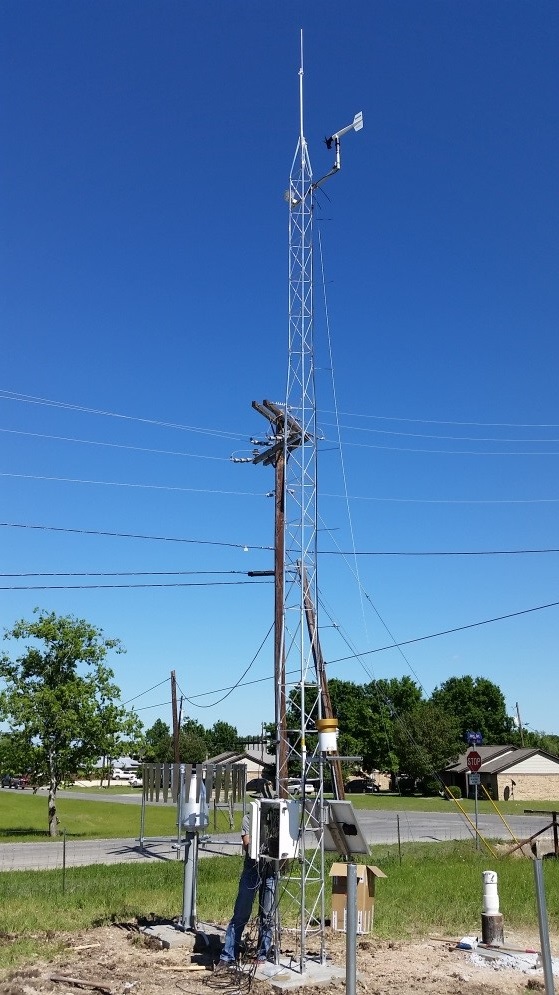The TexMesonet primary goal is to create a unified virtual network of high-quality data to support flood monitoring and flood forecasting efforts by the National Weather Service, regional river authorities, and local emergency responders. The network will also be useful in monitoring and responding to drought and wildfires and in providing information to use water more efficiently for urban and rural irrigation. Information collected will include temperature, precipitation, wind speed, relative humidity, barometric pressure, solar radiation, soil moisture, soil temperature, and evapotranspiration.
Click here.. to access the interactive weather-station map.
What is the TexMesonet?
The Texas Water Development Board is partnering with river authorities, groundwater conservation districts, and other organizations collecting weather data to develop a statewide observation network—the TexMesonet. One of the primary goals of the TexMesonet is to create a unified virtual network of high-quality data for flood monitoring and flood forecasting by the National Weather Service and regional river authorities.
The TexMesonet includes primary weather stations, like the one shown in Figure 1, measuring temperature, precipitation, wind speed, relative humidity, barometric pressure, solar radiation, soil moisture, and soil temperature with instruments mounted on a 30-foot tower. Secondary stations, like the one in Figure 2, measure temperature, precipitation, and soil moisture.
Data from the TexMesonet sites and hundreds of other locations around Texas are streamed to a web viewer to help Texans see and respond to changing weather situations and plan for the future.

Figure 1. Blanco Weather Station

Figure 2. The secondary weather station on Little Blanco River.
How can you help?
We are looking for individuals, organizations, and local government entities that are willing to host weather stations on their property. The weather stations have a footprint of about 16 feet square and are solar-powered, self-contained systems that Texas Water Development Board staff will visit two to three times a year for maintenance. The weather stations need to be located on open ground away from trees, buildings, and other obstructions in order to collect high-quality weather data. We also look at factors like the distance from existing weather stations, soil type, and elevation in selecting new sites. For more information, please contact us at [email protected] or call Andrew Weinberg at (512) 463-3210.



